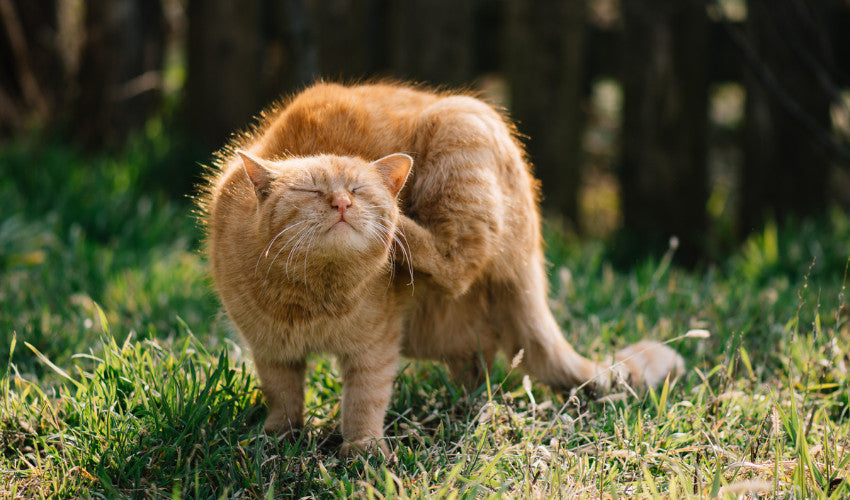Pet Care After an Insect Sting

Insect stings can be painful or itchy, or may cause more severe skin or allergic reactions. What should you do to care for your pet after an insect sting to keep the animal comfortable and avoid any other possible complications?
Insects That Sting
A wide variety of insects can sting, including bees, wasps, hornets, fire ants, yellow jackets, mosquitos, spiders, and more. Other insects, such as fleas and ticks, may bite but not necessarily sting, though the reactions can be the same. Many insects, whether they bite or sting, are not typically aggressive, but bite or sting only as a defensive mechanism if they feel threatened.
Symptoms of Insect Stings
The sharp or burning pain or itching is the most common symptom associated with an insect sting, but it is not the only possible reaction. Other symptoms that can indicate your pet has been stung include:
- Startled behavior, such as sudden jumping or yelping
- Nibbling or itching at one specific spot
- Sensitivity to touch at a specific point
- Skin redness or a raised welt
- Excessive drooling
- Panting or trouble breathing
- Vomiting or diarrhea
- Muscle twitching or seizures
More severe reactions are possible with multiple insect stings, or if an animal has allergies or other sensitivities to the venom insects produce. Because many of these symptoms can also indicate other conditions, however, if a pet exhibits a severe reaction, it is best to consult a veterinarian to be sure there are no other causes and that the pet receives the best treatment to relieve any discomfort.
Proper Pet Care After an Insect Sting
Insect stings are relatively easy to treat, and treatment can help minimize potential complications. If your pet is stung…
- Identify the insect if possible. This can help determine the best treatment if severe reactions occur. If possible, capture the insect or keep its body intact for proper identification. Also check for other insects nearby to prevent additional stings.
- Remove the stinger if necessary. If the stinger remains in the animal’s skin, it will continue to release venom and stronger reactions could occur. Don’t pinch the stinger, which could release more venom, but instead scrape it out with a dull knife or edge of a credit card.
- Soothe the sting. A thick paste of baking soda and water can provide relief, or if the affected skin is a large area, an oatmeal bath can be a good option. A cool compress – either a damp towel or an ice pack wrapped in a towel – can also be soothing immediately after a sting.
- Consult a veterinarian. A pet’s reaction to an insect sting might appear in just a few minutes, or it could take a few hours for severe reactions to manifest. Ask the vet about the possibility of anti-histamine drugs and the proper safe dosage for your pet if needed.
- Prevent scratching. Pets will naturally scratch, bite, or nibble at sore or irritated skin. This can potentially spread the insect venom to a larger area, or cause open wounds that may become infected. Use a bandage or cone collar to prevent excess scratching.
- Provide food and water. Good nutrition and adequate hydration can help a pet recover from insect stings more quickly. If the pet has been stung in or near the mouth, soft food may be necessary so the animal can eat more comfortably.
- Be observant. It is best to keep an eye on the pet’s reactions and behavior for a day or two after an insect sting. This can ensure any lingering effects are noted right away, and will help prevent more serious complications from developing.
Preventing Insect Stings
The best way to keep a pet from suffering due to insect stings is to prevent such stings from occurring. Supervise your pet closely whenever it is outdoors, and check the yard and garden regularly for stinging insect nests, including anthills or other infestations. Prune flowers and shrubbery to make them less hospitable to stinging insects, and consider treating the house and landscape with the proper pesticides or insecticides to discourage stinging insects (but keep pets away from chemical treatments as long as necessary!). Installing short, decorative fences around flowerbeds can also keep a pet from investigating bees at work, and will minimize the risk of accidental stings if a pet gets too close.
An insect sting can be uncomfortable for any pet, but knowing how to properly treat these painful incidents can keep pets at ease.
- Choice Pet Admin
